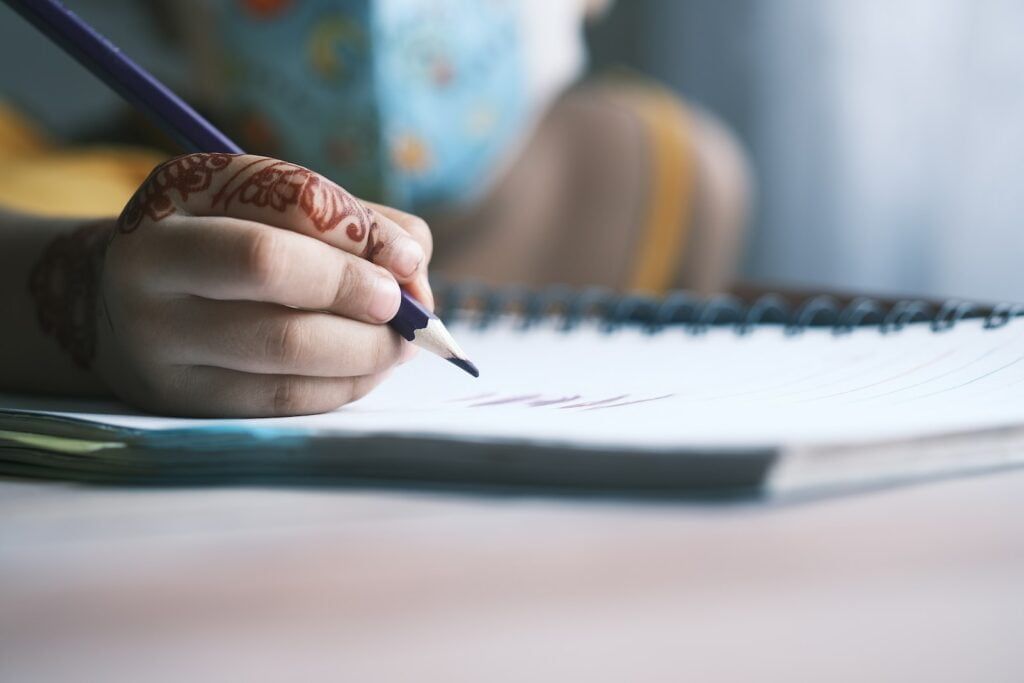Journaling as Your Inner Child to Heal Past Trauma

Within each of us resides an inner child. This hidden part of our subconscious has been absorbing messages and experiences from a time when we were not yet able to fully comprehend their meaning, both mentally and emotionally. This inner child carries with it a treasure trove of emotions, memories, and beliefs from our past, as well as aspirations and dreams for the future.
Journaling is indeed a powerful tool for self-reflection and emotional processing to heal old wounds. Taking it a step further, you can journal as your inner child, allowing their thoughts, feelings, and desires to flow onto the page. This technique can provide unique insights into your subconscious and help you reconnect with your inner child on a deeper level.
Journaling as your inner child is like setting sail on a voyage across the vast ocean of your subconscious. As you embark on this journey of self-discovery, your pen becomes the compass that guides you through the uncharted waters of your innermost thoughts, feelings and desires.
With each entry, you navigate the currents of your emotions, exploring hidden coves of creativity and forgotten islands of playfulness that have been obscured by the storms of life. As you delve deeper into the depths of your inner world, you encounter the untamed and authentic aspects of yourself, the parts that have longed for expression and understanding.
By allowing your inner child to steer the course, you open yourself up to new horizons of self-awareness and emotional growth. As you continue to sail through the ever-changing seas of your subconscious, you learn to embrace the winds of change, navigate the turbulent waves of your emotions, and chart a course towards a more authentic and fulfilling life.

A brief history of the inner child concept
The concept of the inner child can be traced back to the early 20th century and the work of pioneering psychologists such as Carl Jung and Sigmund Freud. Jung was the first to coin the term “divine child” archetype, which he believed represented the pure, innocent, and spontaneous aspects of our psyche. Freud, on the other hand, introduced the idea of the “inner child” as a manifestation of unresolved childhood experiences that continue to influence our adult lives.
In the latter half of the 20th century, the inner child concept gained more prominence in the fields of psychotherapy and personal development. Psychologist Alice Miller, author of the ground-breaking book “The Drama of the Gifted Child,” emphasized the importance of recognizing and healing the inner child as a means of overcoming emotional trauma and fostering self-awareness.
The inner child plays a significant role in self-awareness, as it represents the part of our psyche that embodies our true emotions, desires, and vulnerabilities. By acknowledging and nurturing our inner child, we can develop a deeper understanding of our emotional needs and triggers, leading to improved emotional intelligence and well-being. We can also identify and address unresolved issues from our childhood, which can help us break free from unhealthy patterns and habits. Furthermore, we can enhance our creativity, spontaneity, and playfulness, contributing to a more fulfilling and joyful life.
Research on the inner child has shown that addressing unresolved childhood issues can have a profound impact on mental health and well-being. A study published in the Journal of Personality and Social Psychology found that participants who engaged in inner child work exhibited increased self-compassion, decreased self-criticism, and improved emotional regulation. A meta-analysis published in the Journal of Counseling Psychology demonstrated that therapies incorporating inner child work, such as Inner Child Integration Therapy (ICIT), had a significant positive effect on reducing symptoms of anxiety, depression, and post-traumatic stress disorder.
Many people who have written journals as their inner child, engaged in journaling or other creative practices that involve exploring their emotions, vulnerabilities and childhood experiences to heal from past trauma. Some notable examples include Frida Kahlo, the renowned Mexican artist, whose deeply personal paintings often depicted her own childhood experiences and emotional pain.
Virginia Woolf, the celebrated English writer, who frequently explored themes of childhood and self-discovery in her works, including her famous novel To the Lighthouse; and Anais Nin, the French-American author known for her extensive diaries, which spanned more than six decades and documented her personal journey of self-exploration, including her relationships with her parents and her innermost thoughts and feelings.
By acknowledging and nurturing the inner child, individuals can foster self-awareness, emotional healing, and personal growth, unlocking their full potential and leading a more authentic, fulfilling life.

What are the benefits of journaling as your inner child?
Emotional Expression: Journaling as your inner child allows you to express emotions that you may have suppressed or ignored. By giving your inner child a voice, you can explore and better understand your emotions, ultimately leading to personal growth and healing.
Gaining Perspective: Writing from the perspective of your inner child can help you view your life and experiences through a different lens. This change in perspective may reveal new insights and offer fresh solutions to challenges you’re facing.
Nurturing Creativity: When you journal as your inner child, you may find yourself tapping into a wellspring of creativity and playfulness. This process can inspire new ideas, help you overcome creative blocks, and stimulate your imagination.
Enhancing Self-Understanding: As you write from your inner child’s perspective, you’ll develop a deeper understanding of your needs, desires, and fears. This knowledge can lead to personal growth, improved relationships, and a more fulfilling life.

Easy steps to start journaling as your inner child
Create a Safe Space: Find a quiet, comfortable spot where you can write without distractions. Set the mood with calming music, candles, or anything else that helps you relax and focus.
Start with a Prompt: Begin by writing a question or topic that you’d like to explore from your inner child’s perspective. For example, “What makes me happy?” or “How do I feel when I’m scared?”
Let Your Inner Child Speak: Write your response as if your inner child is speaking. Allow yourself to tap into their thoughts, feelings, and emotions, and let their voice guide your writing. Don’t worry about grammar or spelling; just let the words flow.
Be Open and Non-Judgmental: As you journal, avoid judging or censoring your inner child’s thoughts and feelings. Embrace their authenticity and vulnerability, and remember that there are no right or wrong answers.
Reflect and Process: After you’ve finished writing, take some time to reflect on what your inner child has shared. What insights or discoveries have you made? How can you use this information to better understand and care for your inner child?
Journaling as your inner child can be a transformative practice that allows you to connect with your authentic self, process emotions, and gain valuable insights. By giving your inner child a voice, you can foster a deeper understanding of your needs and desires, ultimately leading to a more fulfilling and joyful life.
Do you want to share your story and inspire our readers with your wisdom and expertise? Know that every story is paving the way for a brighter, happier future.




